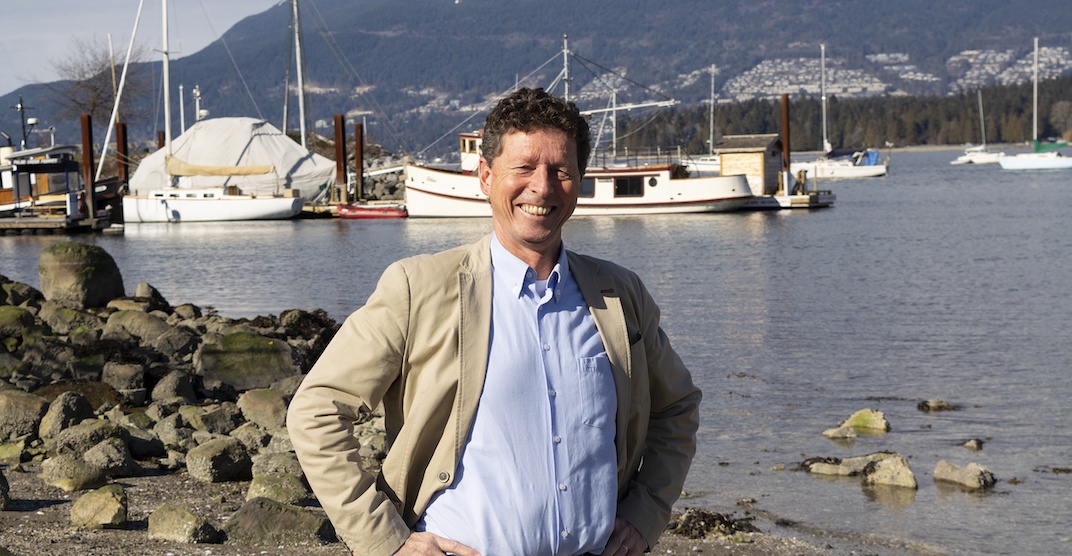Opinion: Vancouver Maritime Museum’s new downtown home highlights its bright future

Written for Daily Hive by Dr. Joost Schokkenbroek, the Executive Director of the Vancouver Maritime Museum.
In a city with views as breathtaking as Vancouver, locals can be forgiven for letting the natural beauty of the city outshine its bonafide heritage as a port city and maritime commercial hub.
But the proposed relocation of the Vancouver Maritime Museum to a high-traffic site in Coal Harbour may change that. Relocating from its current space in Kitsilano’s Vanier Park, to its new location near the shores of Burrard Inlet – where our modern-day port has its roots – will put the city’s rich maritime history top-of-mind with locals and tourists alike, highlighting our city’s status as the home of Canada’s largest port.
See also
- Vancouver’s Maritime Museum could be moving downtown
- This is the conceptual design for the new Vancouver Maritime Museum in Coal Harbour
- Chan family donates $40M to fund new Vancouver Art Gallery (RENDERINGS)
- BC government's new Chinese Canadian history museum could cost up to $100 million
- SFU plans to build a new art museum at its Burnaby Mountain campus
Each year, Vancouver welcomes nearly one million cruise passengers who come through the Port of Vancouver to visit our beautiful city before continuing on their journey. The museum’s new location in close proximity to the Canada Place cruise ship terminal will give these visitors a chance to add historical learning into their itineraries of sightseeing.
Not only will the new venue’s size — nearly four times the square footage of the current location — more accurately reflect the importance of Vancouver’s port, its design by the world-renowned architect Renzo Piano — known for such works as the Shard in London and the New York Times building — will help engage a new generation of Vancouverites in maritime history.

Looking west at Coal Harbour from the Vancouver Convention Centre. (Shutterstock)
The new space — fittingly built at water-level of a new mixed-use development — would allow for more digitized exhibitions and artifact displays, while still displaying the fabled RCMP vessel St. Roch, the first vessel to circumnavigate North America.
At the proposed new location, we will continue to showcase Canada’s nautical past, including its unique, millennia-old Indigenous maritime history, while pursuing our equally important goal of becoming an international centre for the study of our oceans. Because of its historic legacy and academic resources, Vancouver is the only port city in the world where such diverse perspectives can and should be combined.
The move signals an important and long overdue step towards the realization of our vision for the museum – one that transcends being just a space for cultural artifacts, but also plays a key role in fostering Vancouverites’ civic pride.

Dr. Joost Schokkenbroek, the Executive Director of the Vancouver Maritime Museum. (Vancouver Maritime Museum)
The challenge of energizing citizens about the niche topic of maritime history is one I know well as the former chief curator at the National Maritime Museum in Amsterdam, home to one of the most economically and historically significant ports in the world.
But Vancouver is no slouch. In fact, it is impossible to conceive of the city’s history without an understanding of how its unique geographical location along two waterways – the Pacific Ocean and the Fraser River — shaped Vancouver’s development as a port city and cemented its status as a key trade hub in North America.
For instance, cornerstone neighbourhoods of Vancouver like Gastown developed largely due to their proximity to the Burrard Inlet port, where industrial workers and seafarers, like its namesake Jack “Gassy” Deighton, lived and, infamously, played.
It was through the Burrard Inlet port that Vancouver made its first international export in November 1864 – an order of lumber destined for Australia via the cargo ship Ellen Lewis, signaling the beginning of B.C.’s robust natural resource industry.

The St. Roch inside the Vancouver Maritime Museum in Kitsilano. This 1928-built vessel was the first vessel to cross through the Northwest Passage from west to east, and the first ship to completely circumnavigate North America. (Michael Stevens / Flickr)
Today, while the types of vessels transporting B.C. goods across the world has changed drastically since the days of the Ellen Lewis, the role of Vancouver’s port as the economic engine of our city and province have not, enabling the trade of approximately $200 billion in goods every year.
By relocating the maritime museum along Burrard Inlet’s shores, to the place where in 1928 the St. Roch was built, we hope to fuse the past and present role of Vancouver’s maritime industries — giving Vancouverites and visitors the unique opportunity to learn about our region’s maritime through vessels like the Ellen Lewis and St. Roch, while admiring the passing cargo ships that embody our city’s rich personality and economy today.
See also
- Vancouver’s Maritime Museum could be moving downtown
- This is the conceptual design for the new Vancouver Maritime Museum in Coal Harbour
- Chan family donates $40M to fund new Vancouver Art Gallery (RENDERINGS)
- BC government's new Chinese Canadian history museum could cost up to $100 million
- SFU plans to build a new art museum at its Burnaby Mountain campus

